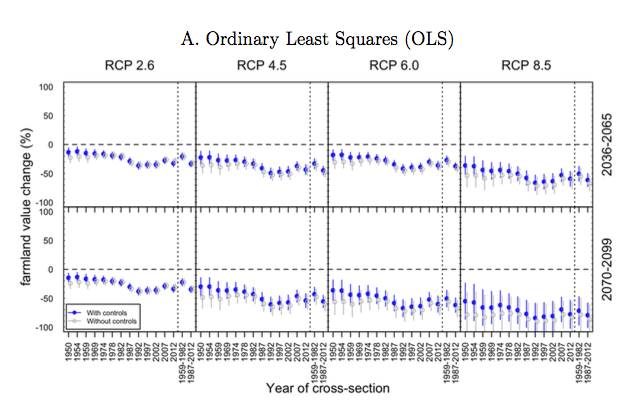I had the pleasure of driving down to rainy Stanford for PacDev last weekend. Aside from the obviously-most-important benefit of having fondue for dinner at my parents' house, I got to present my ongoing work with Louis. Our paper, on the effects of electrification on economic development in India, is finally almost ready to see the light of day (for real this time, we swear!) - there will of course be an announcement on this blog when that happens. But enough about me. I also got to see a bunch of interesting new papers in a diverse range of subsets of development economics, and I'm pretty excited about them. A few highlights:
- I went to an (early) morning session on taxes, which I know almost nothing about, and really enjoyed all four papers I saw: Anne Brockmeyer's on third-party information and withholding decisions in Costa Rica; Spencer Smith's on some cool experimental evidence on information (also in Costa Rica); Jose Tessada's on regulations about firm gender ratios and capital substitution; and the always-excellent (follow her on Twitter!) Dina Pomeranz's on multinational corporations and tax havens.
- Yong Suk Lee (previously a professor at Williams!) has an interesting new paper looking at the effect of sanctions in North Korea on economic activity. He shows that the sanctions and subsequent shifts in international trading partners led to changes in the locational composition of economic activity, as proxied by nighttime lights. While I'm always wary of the use of nightlights to proxy for sub-national GDP, this paper deals with these issues nicely, making within-country comparisons between regions and talking about relative concentration and identification. Plus, we have so little to go on with North Korea. Cool stuff.
- I also went to two political economy sessions - like economic history, political economy often has some of my favorite papers of conferences like this. I particularly enjoyed listening to my old boss, Saumitra Jha, talk about an amazing experiment in which giving Israelis stocks led them to be more willing to vote for peace-promoting government, and hearing Kweku Opoku-Agyemang (a Berkeley post-doc), talk about the effects of raising police salaries on bribery.
All in all, a great conference. Hopefully I'll get to go back next year!
If you read all the way down here, here's a reward. Amazing. h/t Josh.




